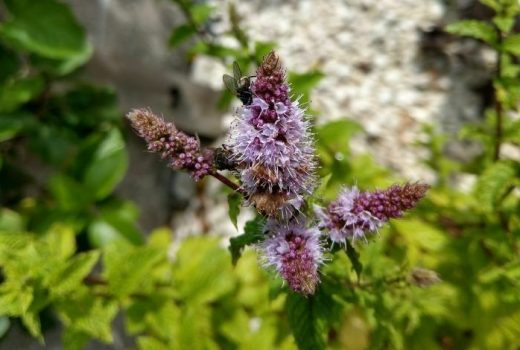With a little information and tips on how to handle your mint plants, you can stop unwanted blooms. This guide will show you the best solutions to stop your mint plants from flowering.
Mints are beautiful hardy plants that you can grow in any succulent garden. However, not every mint needs to be potted or grown in pots or garden borders.
For What Reason Mint Plants flower?
Mint’s life cycle is written in the genes of the plant. When a mint plant is fertilized, it undergoes a transformation. It stops growing and starts making flowers. It stops making leaves and starts making roots.
Why Do Mint Plants Bloom?
Blossoming mint plants (Mentha x Piperita) is a common problem in many gardens. People grow mint for its aromatic leaves, not its flowers. (To grow mint for tea or cooking, buy mint plants.)
If your mint plants are flowering, the problem is almost certainly a lack of water supply.
Mint plants need good drainage, and when the soil is hard and dry, they need extra water. Good drainage means planting in raised beds or containers.
Mint plants also need rich, moist soil. To create it, add compost and aged manure to the planting hole. Water mint plants deeply (to 18 inches) once or twice a week, especially during dry spells. Water in the morning, so the plants have time to dry off before nightfall.
What is Bolting?
Mint plants bolt when they’ve finished growing for the season. If this happens, your mint plant will start giving off seeds, making it useless for fresh herb usage.
Bolting is when the plant flowers and sends up seed stalks instead of leaves. Usually, the only symptom is a plant that’s about a foot tall with a flower stalk in the middle.
So, how does a flower reproduce?
The mechanism by which a flower reproduces is called bolting. A bolt is the flower’s reproductive organ. It is a long, rod-like structure that grows out of the flower. The flower makes a long, sharp point at one end. At the other end, it is covered in pollen. The pollen, which is powdery, is sticky. It sticks to everything, including other things flowers.

How to Prevent Bolting?
There are several things you can do to help your mint plant get through this season.
Keep the roots cool. Because mint is a tropical plant, keeping it cool during the hot season will help the plant last.
- Mulch your mint plant:
Mulching encourages your plant to send up new growth rather than flower.
- Feed mint:
Adding fertilizer to the soil will help it grow.
- Winterize:
Some mints can withstand cold weather. If you’re concerned it won’t make it through the winter, you can dig up the plant in late fall and move it to a frost-free area.
But, alas, sometimes the mint plant will bolt anyway.
If your mint plant bolts, don’t despair. There are a couple of things you can do to help it make it through winter.
You can trim the flower stalk back. This will cause the plant to send up new leaves instead of seeds.
You can cut off the seed stalks.
Tips for ensuring mint’s potency and prolonging the harvest
Most mint varieties, such as peppermint, spearmint, and apple mint, bloom in spring and summer. Most mints are ready to harvest at between three and four feet tall.
To prevent bolting, you can prune the leaves of the plant, or pinch off flowers. This will cause the plant to devote more energy to growing roots instead of producing leaves.
You can also pinch off the flower buds as soon as they appear. Pinching off individual buds is the easiest way to control flowering, but you may want to pinch off the entire flower cluster.
Once the plant has reached four to six inches tall, pinch off the lower leaves. Mint plants that reach this height can be harvested with scissors.
If you pinch off the entire flower cluster, the plant will flower later. Pinching off the buds, on the other hand, will cause the plant to flower sooner. Pinching off the entire flower cluster is especially useful if you want to keep mint from flowering.
Pinching mint encourages the plant to make denser, stronger plants. Pinching also encourages the plant to grow more roots, which improves the plant’s vigor and resistance to disease.
By pinching off the lower leaves, you can delay flowering and prolong the harvest. The plant will gradually get taller, but the plant will remain small and produce fewer leaves.
You can apply this technique to mint plants that are only a few inches tall, but you have to pinch off the entire flower cluster. If you want to delay flowering, but you don’t want to pinch off the entire flower cluster, pinch off individual buds. Pinching mint plants also helps control the spread of mint. If you pinch off the entire flower cluster, the plant will devote more energy too.
Can You Eat Mint Flowers?
Yes, you can
Main Reason: Mint flowers are edible. They taste like spearmint, but with a stronger lemony flavor. They contain high levels of essential oils, and because they are so small, they pack a lot of flavors. Mint flowers make a great garnish, and you can use them in salads, soups, desserts, and vegetables.

